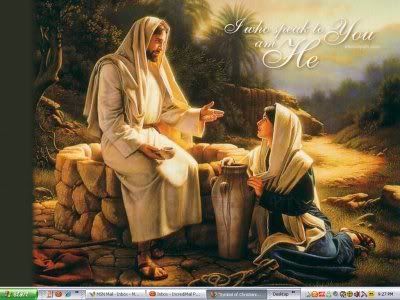The issue of what Jesus died upon is critical. The apostle Paul wrote that "Christ by purchase released us from the curse of the Law by becoming a curse instead of us, because it is written: "Accursed is every man hung upon a stake (Greek xylon, "tree" King James Bible)."(Gal 3:13) Paul was here quoting from Deuteronomy 21:22,23, which says that a man "deserving of the sentence of death" must be ' hung him on a tree'.("tree", Hebrew ets, King James Bible) The online interlinear Scripture4all renders xylon, as used by Paul, as "wood, pole". At Acts 5:30, the apostle Peter said to the Jewish religious leaders, that "the God of our forefathers raised up Jesus, whom you slew, hanging him upon a stake (Greek xylon, meaning "wood, pole", online interlinear Scripture4all )
The Aramaic word ’a‘, corresponding to the Hebrew term ‛ets, appears at Ezra 6:11, where it is said regarding violators of a Persian king’s decree: “A timber will be pulled out of his house and he will be impaled upon it.†Obviously, a single timber would have no crossbeam.("timber", King James Version, Darby's Bible, Webster's Bible, "beam", American Standard Version )
It was Jewish law that those guilty of such heinous crimes as blasphemy or idolatry were first killed by stoning, by beheading, or by some other method, and then their dead bodies were exposed on stakes, or trees, as warning examples to others. (Deut 21:22, 23; Jos 8:29; 10:26; 2Sam 21:6, 9) The Egyptians may also have first killed their criminals before fastening them to stakes, as is indicated by Joseph’s prophetic words to Pharaoh’s chief baker: “Pharaoh will lift up your head from off you and will certainly hang you upon a stake." (Hebrew ‛ets, meaning "tree")â€â€Gen 40:19, 22; 41:13.
In rendering Deuteronomy 21:22, 23 (“stakeâ€Â) and Ezra 6:11 (“timberâ€Â), translators of the Septuagint Version employed the Greek word xy´lon, the same term that Paul used at Galatians 3:13. It was also the one employed by Peter, when he said Jesus “bore our sins in his own body upon the stake (Greek xy´lon ).†(1 Pet. 2:24) In fact, xy´lon is used several other times to refer to the “stake†on which Jesus was impaled. (Acts 5:30; 10:39; 13:29) This Greek word has the basic meaning of “wood.†There is nothing to imply that in the case of Jesus’ impalement it meant a stake with a crossbeam.
Thus, Jesus had to die upon a "tree" or upright "pole" for him to become the "accursed" one "instead of us". His death on a "tree" removed the Jews from the curse of the Mosaic Law. It is true that the Romans had a "cross", but these were used as symbols for their religious worship. Says The Companion Bible: “These crosses were used as symbols of the Babylonian sun-god . . . and are first seen on a coin of Julius Caesar, 100-44 B.C., and then on a coin struck by Caesar’s heir (Augustus), 20 B.C.†The Roman nature-god Bacchus was at times represented with a headband containing a number of crosses.
The Greek word xylon also has the same basic meaning as the Greek word stauros, which literally means "pale".(online interlinear Scripture4all, and "stake", The New Testament in the Original Greek by B. F Westcott and F. J. A. Hort) At Matthew 27:32, a certain Simon of Cyrene was "impressed into service to lift up (Jesus) torture stake". (Greek stauros, "pale" online interlinear Scripture4all ) The word "pale" means "fence stake: a pointed slat of wood for a fence".(2005 Encarta Dictionary) At Mark 15:32, the Greek word sustauroo is used and means literally "having been together impaled"(online interlinear Scripture4all ) or "having been put on stakes together".(The New Testament in the Original Greek, by scholars B. F.Westcott and F. J. A. Hort)
The Bible writers used the Greek noun stau·ros´ 27 times and the verbs stau·ro´o 46 times, syn·stau·ro´o (the prefix syn, meaning “withâ€Â) 5 times, and a·na·stau·ro´o (a·na´, meaning “againâ€Â) once. They also used the Greek word xy´lon, meaning “wood,†5 times to refer to the torture instrument upon which Jesus was nailed. Stau·ros´ in both the classical Greek and Koine carries no thought of a “cross†made of two timbers. It means only an upright stake, pale, pile, or pole, as might be used for a fence, stockade, or palisade. Says J. D. Douglas’ New Bible Dictionary of 1985 under “Cross,†page 253: “The Gk. word for ‘cross’ (stauros; verb stauroo . . . ) means primarily an upright stake or beam, and secondarily a stake used as an instrument for punishment and execution.â€Â
W. E. Vine said this: “STAUROS (ÃĀαÃ…ÃÂÃŒÂ) denotes, primarily, an upright pale or stake. On such malefactors were nailed for execution. Both the noun and the verb stauroo, to fasten to a stake or pale, are originally to be distinguished fr the ecclesiastical form of a two beamed cross.†Greek scholar Vine then mentions the Chaldean origin of the two-piece cross and how it was adopted from the pagans by Christendom in the third century C.E. as a symbol of Christ’s impalement.â€â€Vine’s Expository Dictionary of Old and New Testament Words, 1981, Vol. 1, p. 256.
Thus, Jesus was put to death on a "torture stake", a "pole" or "fence pale", not "cross", as the churches assert.










